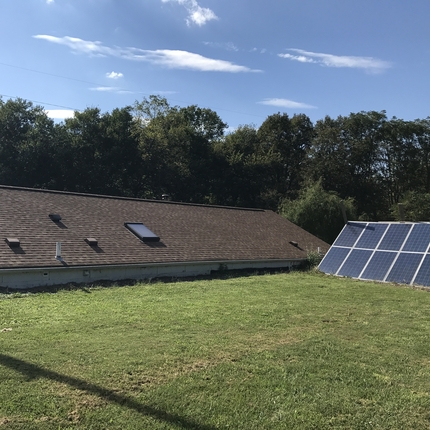By Jordan Rasmussen, former staff member
South Dakota once carried the official moniker of “the Sunshine State,” and is one of only three states without net metering policies. But what does net metering have to do with sunshine and why has South Dakota, a state with a strong portfolio of renewable energy generation, not yet adopted net metering policies?
Simply, net metering is an incentive for the installation and use of solar photovoltaics (PV) for energy generation. Through the formalization of net metering policies, distributed generation customers — those producing solar energy at their homes or businesses — are more readily able to sell the excess energy generated back to the utility for use across the grid. This sale of power to the utility appears as a credit on the customer’s utility bill. This credit offsets the customer’s electricity consumption during the current month or across the year, depending on state guidelines.
While net metering provides a benefit to the customer through the generation of their own power and reduction of electric bills, utility companies and the broader customer base also gain. Power generated close to the source of use, such as the energy that is generated from PVs on a farm shed, is also less taxing on the distribution system. Solar generation can also decrease electricity demand during peak hours, which is a gain for both the utility and customers.
Despite these benefits for customers and utilities alike, South Dakota’s Public Utilities Commission has opposed the addition of net metering policies on the basis of added costs to consumers. While this stance does not prohibit generators from selling power to utilities, it does not allow for a consistency in price for the energy sold. Under net metering, utilities would be required to pay market value to the generator, often at off-peak times when additional power generation is not required. These added costs are then passed on to consumers according to the commission.
Moreover, in 2016, South Dakota’s legislature contemplated a bill that would require a more consistent rate for the power generated by solar producers as a step toward a net metering policy. The bill died in committee, allowing for federal tax credits and state property tax credits to remain the lone incentives for solar energy generation.
Even in the face of these restrictions, solar energy is making its way to the market in South Dakota. In 2015, 1,000 MWh of the 9,734,000 MWh of power generated in South Dakota came from solar energy. This limited generation of 1,000 MWh in 2015 reflected a 29.3 percent gain from the previous year.
For South Dakota, a state where 73 percent of net electricity generation comes from hydropower and wind, solar energy remains a renewables omission. But this exclusion of solar remains not because of a lack of sunshine, just a lack of policy. Without net metering, the sunshine for which South Dakota has emblazoned upon its flag exists only as a reminder of the underutilization of its solar resource.




